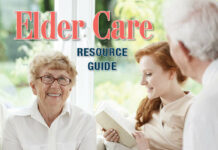By Marianne Delorey
“Don’t try to be young. Just open your mind. Use that decade! Use them all!” – Betty White, on aging.
In 1985, a comic first appeared that proposed one way to judge a film. The Bechdel Test is a simple measure about a movie’s inclusion of female characters. The test asks: 1) Does the movie have at least two women in it? 2) Do they talk to each other? and 3) Does their conversation touch on anything other than a man?
Because the Oscars are coming up, this article focuses on creating a similar way to rate how elder-friendly a movie is. Because of the length and breadth of her career, I am calling this the Betty White Movie scale.
Betty White, who just turned 96, has been in show business for over 75 years and has worked in radio, television, film and on Broadway. In recent years, a Facebook petition even demanded she host Saturday Night Live, which she did in 2013.
Hollywood is a youth-focused industry. Portrayals of aging are frequently absent from movies, and those movies that do include an elderly character paint them with negative stereotypes. Worse, sometimes when a character must age, they use makeup to age the character instead of using actors of appropriate ages.
There are many good ways movies can incorporate elders, and yet the beauty of the Bechdel Test is its simplicity. So, I limited this test to the three most important questions:
- Are there any named characters with spoken lines who are likely over the age of 60?
- Are the older characters instrumental to the plot?
- Are the older characters generally developed without over reliance on stereotypes? (not all are frail, forgetful, dependent, passive, grouchy, set in ways, pining for youth)
Some notable movies truly focus on aging – either on a specific person as they age (“The Curious Case of Benjamin Button,” “The Age of Adaline”), an older person (“Grumpy Old Men,” “Driving Miss Daisy,” “On Golden Pond”), or on groups of older people (“Cocoon”). These movies, of course, all score highly on the Betty White scale. The average movie, however, should be including more depictions of aging. Our entertainment should reflect reality and that includes that older people live among us, have meaningful interactions with us, and are all unique individuals.
As of the writing of this article, it is yet unclear what movies will be nominated for the upcoming Oscars. However, “Star Wars, The Last Jedi” is likely to be nominated considering the history of the series. As such, I reviewed this movie with an eye toward how older characters were portrayed. (Spoiler Alert: stop reading now if you have not seen this movie). As is typical, Luke, Leia and Yoda are all viewed as wise people who shape the training of the young. Luke and Leia are strong in their own right and instrumental to the plot of the movie even aside from their role as teachers. As the richness of older characters is best depicted when they are not done growing and developing themselves, I am particularly impressed by Luke’s character. In this movie, Luke shows such growth that by the end of the movie, he becomes one with the Force. I’d give this movie a 3 out of 3 on our scale.
Given that in 2018, the Academy Awards will be 90, let’s hope they honor their own longevity by including diversity of age as a factor when evaluating movies. And if they don’t, let’s start demanding better of Hollywood. If we start asking for better portrayals of older characters, Hollywood will oblige. Let’s ask for more movies that score highly on the Betty White Scale.
Marianne Delorey, Ph.D. is the executive director of Colony Retirement Homes. She can be reached at 508-755-0444 or mdelorey@colonyretirement.com and www.colonyretirementhomes.com.












